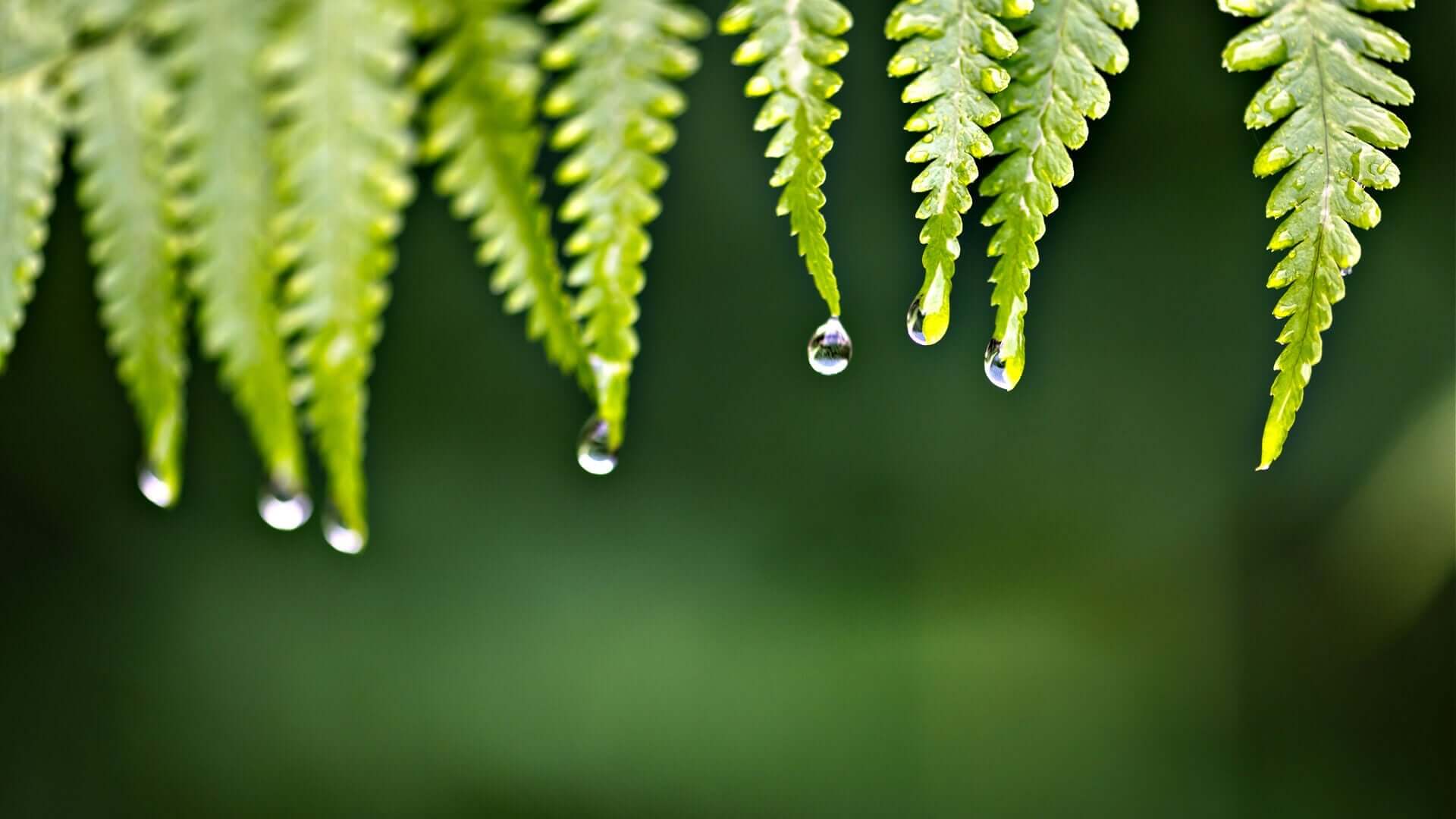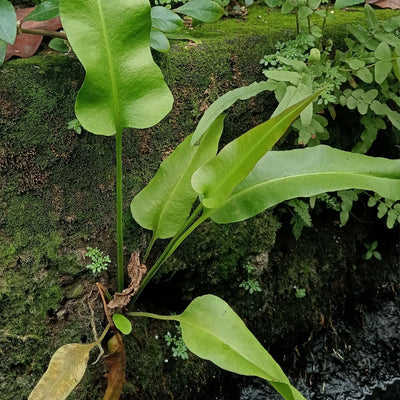Native Ferns for Wildlife Gardens
Gardening has long been associated with aesthetics, relaxation, and personal satisfaction. However, in recent years, there has been a growing awareness of the importance of gardening not just for human enjoyment but also for the benefit of wildlife. Native plants have a vital role in creating wildlife-friendly gardens, and among them, native ferns stand out as particularly valuable contributors. This essay will explore the significance of native ferns in wildlife gardens, focusing on how they serve as a haven for birds and insects.
Ferns are a fascinating group of plants that have been present on Earth for millions of years, thriving long before flowering plants emerged. They are characterized by their unique foliage, which varies in size, shape, and texture, making them a versatile addition to any garden. Ferns offer various garden styles and condition options, from delicate and lacy fronds to robust, leathery leaves.
One of the most significant benefits of using native ferns in your garden is their ability to attract and support wildlife. Native ferns, which grow naturally in specific regions, provide a crucial habitat for various creatures, from insects and birds to small mammals. Further, they need less upkeep and are invulnerable to pests and diseases since they have adapted to the local environment.
One of the primary benefits of incorporating native ferns into wildlife gardens is their role in providing food for various insects. Many fern species are host plants for butterfly and moth caterpillars. For instance, the Eastern Comma butterfly lays its eggs exclusively on native ferns like the Christmas Fern (Polystichum acrostichoides). When these caterpillars hatch, they feed on the fern leaves, eventually transforming into adult butterflies. By planting native ferns, you create a vital link in the life cycle of these beautiful insects, attracting other wildlife, such as birds that prey on the caterpillars.
Ferns also offer shelter and nesting sites for birds. Their lush, feathery fronds provide a haven for small birds seeking protection from predators and harsh weather conditions. Birds like the American Redstart often use the dense foliage of ferns as nesting sites. The fronds act as a natural canopy, shielding the nests from prying eyes above. Moreover, ferns in your garden create an appealing environment that attracts insect-eating birds like warblers, wrens, and vireos. These birds recreate an essential role in controlling insect populations, helping to maintain a balanced ecosystem in your garden. One of the most unique ferns is the walking fern.
Native Ferns Are Amazing In Gardens
Another compelling reason to include native ferns in your wildlife garden is their ability to improve soil health and moisture retention. Many fern species are well adapted to shady, moist conditions, which makes them excellent choices for areas with less sunlight or damp soil. The root systems of ferns help stabilize the soil, reducing erosion and runoff. As the ferns shed their fronds, they donate organic matter to the soil, supplementing its fertility. Beneficial soil is the footing of a thriving garden ecosystem, supporting a variety of plant and animal life.
Furthermore, native ferns can play a role in mitigating the effects of climate change. As carbon sequestration becomes an increasingly urgent concern, native plants, including ferns, are being recognized for their power to capture and store carbon dioxide from the atmosphere. By planting native ferns, you are creating a habitat for wildlife and contributing to the fight against climate change.
To successfully incorporate native ferns into your wildlife garden, it's essential to choose species that are native to your specific region. Native ferns have evolved to thrive in your local climate and soil conditions, making them better suited for supporting local wildlife. Consulting with local native plant nurseries or botanical gardens can help you identify the most suitable fern species for your area.
Once you've selected the appropriate fern species, consider their specific habitat requirements. Some ferns prefer well-drained soil, while others thrive in consistently moist conditions. Understanding these intentions will help you create a suitable environment for your native ferns to thrive.
Maintenance is relatively straightforward when it comes to native ferns. Depending on your specific garden conditions, regular watering, mulching, and occasional fertilization may be necessary. Monitoring for any pests or diseases that may affect your ferns is also essential, as healthy plants are more likely to attract wildlife.
Things That Could Survive Without Native Ferns
Ferns, often overlooked in flora, play a critical role in supporting various animal species, especially in specific ecological niches. Some animals have evolved to be so intricately intertwined with ferns that their survival depends on these ancient plants. Below, we explore several types of animals that wouldn't survive without ferns. Tennessee ostrich glade fern is one of the oldest ferns alive.
Butterflies and Moths Caterpillars: Many butterflies and moths lay their eggs exclusively on certain ferns. These ferns serve as host plants for the caterpillar stage of their life cycle. For instance, the iconic monarch butterfly relies on milkweed, and viceroy butterflies rely on willow-leaved sunflowers, often associated with specific fern species. Without these ferns, these caterpillars would have no suitable food source, jeopardizing the entire population.
Birds for Nesting and Shelter: Ferns offer a haven for various bird species, serving as both nesting sites and shelter. Birds like the American Redstart, Ovenbird, and the Northern Parula are known to build their nests in the dense, leafy fronds of ferns. These plants provide camouflage and protection from predators, ensuring the survival of their avian inhabitants.
Amphibians and Reptiles: Some amphibians and reptiles, particularly salamanders and lizards, use ferns as shelter and forage. Ferns provide moisture and shade on the forest floor, creating ideal microhabitats for these animals. With ferns, these species would retain an essential habitat component and struggle to find suitable shelter from extreme temperatures.
Insect Pollinators: While insects do not pollinate ferns themselves, they often grow in proximity to flowering plants. Many insects, including bees and butterflies, use ferns as resting spots between flower visits. These insects are crucial in pollinating flowering plants, which, in turn, provide nectar and pollen for other wildlife. The absence of ferns could disrupt this delicate balance and affect pollination networks.
Moss and Leaf Litter Inhabitants: Ferns often grow alongside mosses and leaf litter on the forest floor. These microhabitats provide homes and hunting grounds for tiny invertebrates like mites, springtails, and insect larvae. These little creatures are prey for birds, amphibians, and other wildlife. Without ferns and the associated microorganisms, these creatures' populations would decline, ultimately affecting higher trophic levels.
Ferns are not just beautiful and ancient plants; they are vital to many ecosystems, supporting many animals. These animals have evolved to depend on ferns for survival, whether for food, shelter, nesting, or microhabitat. Therefore, the preservation and conservation of ferns in our ecosystems are essential for the plants and the intricate web of life that relies on them.
In conclusion, native ferns are invaluable additions to wildlife gardens, serving as a haven for birds and insects. Their role in providing food, shelter, and nesting sites for wildlife and their contribution to soil health and carbon sequestration highlights their significance in creating a sustainable and biodiverse garden ecosystem. When you embrace native ferns in your garden, you enhance their ecological value and enjoy the aesthetic beauty of these ancient and elegant plants. By choosing native ferns, you become a steward of the environment, contributing to the conservation of native plant species and the preservation of wildlife habitats.


